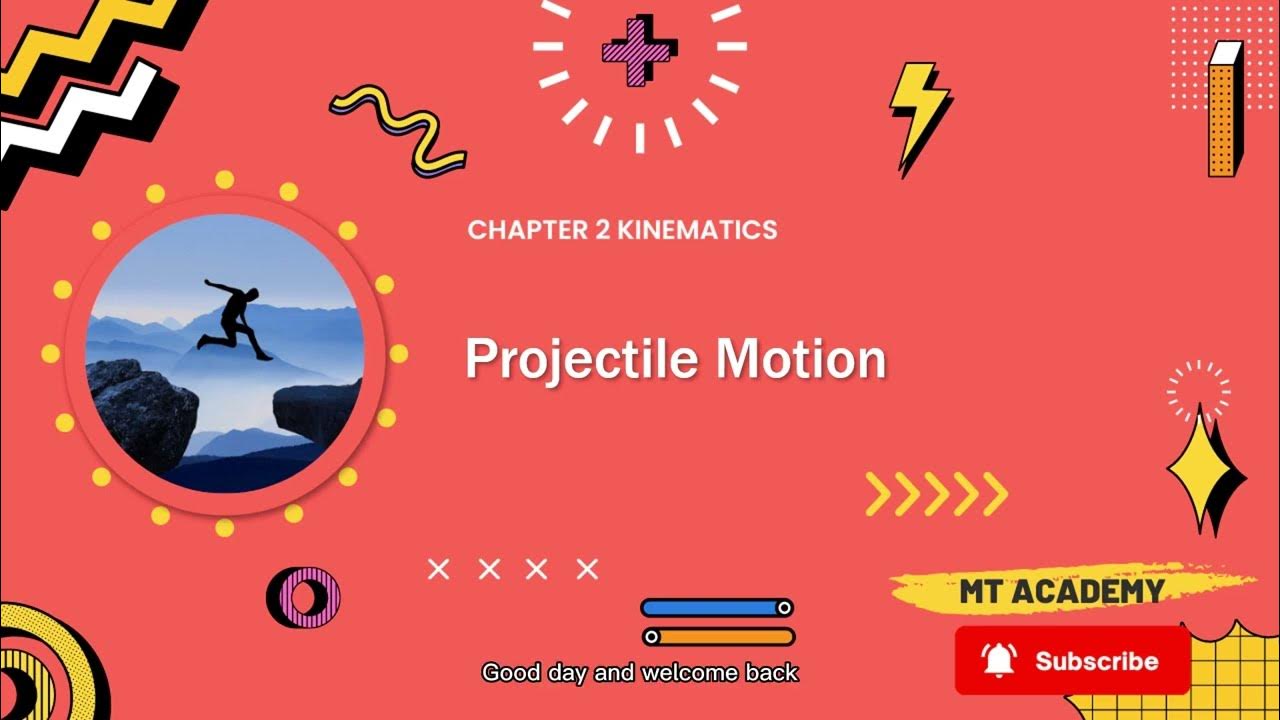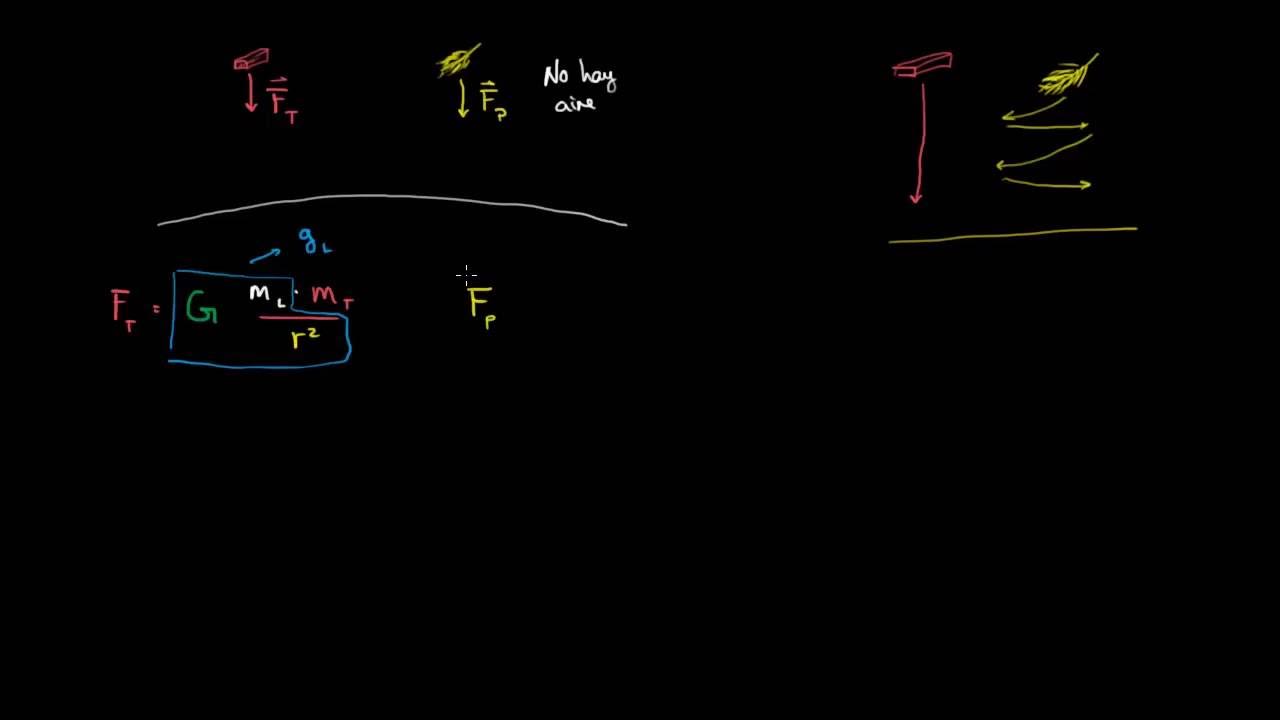Projectile motion graphs | Two-dimensional motion | AP Physics 1 | Khan Academy
Summary
TLDRThis educational video script explores the physics of projectile motion on Earth, ignoring air resistance. It discusses the acceleration, velocity, and position in both the y (vertical) and x (horizontal) directions for three different scenarios: throwing a projectile straight out, at an angle downwards, and straight downwards. The script emphasizes that while acceleration due to gravity is constant and downward in the y direction, there is no acceleration in the x direction. The velocity and position graphs for each scenario are described, highlighting how to treat the x and y components independently.
Takeaways
- 🌍 In all scenarios, the acceleration in the y-direction is constant and downward due to gravity, represented as -g.
- 🚀 There is no acceleration in the x-direction for any scenario, assuming no air resistance.
- 📉 The velocity in the y-direction decreases at a constant rate due to gravity for all scenarios, regardless of the initial velocity vector.
- 🔄 The velocity in the x-direction remains constant for all scenarios since there is no acceleration in this direction.
- 🔵 For the first scenario, the projectile has a positive initial y-velocity, which decreases over time until it reaches zero at the peak of its trajectory.
- 🔵 In the x-direction for the first scenario, the projectile moves at a constant positive velocity, leading to a linear increase in position.
- 🔵 The blue scenario starts with zero initial y-velocity, accelerating downward over time, while the x-velocity is slightly higher than the first scenario.
- 🟡 In the third scenario, the projectile has a negative initial y-velocity, which continues to decrease, and the x-velocity is similar to the blue scenario.
- 📊 The position versus time graph for the y-direction shows an initial increase followed by a decrease, while in the x-direction, it shows a constant rate of increase.
- 📚 Once the initial velocity is broken down into x and y components, each component can be analyzed independently in terms of motion.
Q & A
What is the acceleration in the vertical (y) direction for a projectile launched on Earth?
-The acceleration in the vertical direction is constant and due to gravity, which is directed downwards. It is represented as negative g, where g is the acceleration due to gravity.
Is there any acceleration in the horizontal (x) direction for a projectile on Earth, assuming no air resistance?
-No, there is no acceleration in the horizontal direction. The acceleration remains at zero, assuming no air resistance.
How does the initial velocity vector of a projectile affect its acceleration due to gravity?
-The direction in which the projectile is thrown does not affect the acceleration due to gravity. The acceleration due to gravity is always constant and directed downwards.
What is the initial velocity in the y direction for a projectile thrown straight out from a cliff?
-The initial velocity in the y direction for a projectile thrown straight out is positive, as it is launched upwards.
How does the velocity in the y direction change over time for a projectile thrown straight out?
-The velocity in the y direction starts positive and decreases at a constant rate due to the constant negative acceleration caused by gravity.
What is the initial velocity in the x direction for a projectile thrown straight out?
-The initial velocity in the x direction is positive and remains constant over time, assuming no air resistance.
What happens to the velocity in the y direction for a projectile thrown at an angle downwards?
-For a projectile thrown at an angle downwards, the initial velocity in the y direction is negative and becomes more negative over time due to gravity.
How does the velocity in the x direction compare between the scenarios of throwing the projectile straight out and at an angle downwards?
-The velocity in the x direction remains constant for both scenarios, assuming no air resistance, but the magnitude may differ based on the initial throw.
What is the position-time graph like for a projectile thrown straight out in the y direction?
-The position-time graph for a projectile thrown straight out in the y direction will show an initial increase followed by a decrease as the projectile reaches its peak and then falls back down.
How does the position in the x direction change for a projectile thrown straight out from a cliff?
-The position in the x direction increases at a constant rate as the projectile moves horizontally with a constant velocity.
What is the key takeaway from analyzing the motion of a projectile in both the x and y directions?
-The key takeaway is that once the initial velocity is broken down into x and y components, each component can be treated independently. The motion in one direction does not affect the motion in the other direction.
Outlines

Dieser Bereich ist nur für Premium-Benutzer verfügbar. Bitte führen Sie ein Upgrade durch, um auf diesen Abschnitt zuzugreifen.
Upgrade durchführenMindmap

Dieser Bereich ist nur für Premium-Benutzer verfügbar. Bitte führen Sie ein Upgrade durch, um auf diesen Abschnitt zuzugreifen.
Upgrade durchführenKeywords

Dieser Bereich ist nur für Premium-Benutzer verfügbar. Bitte führen Sie ein Upgrade durch, um auf diesen Abschnitt zuzugreifen.
Upgrade durchführenHighlights

Dieser Bereich ist nur für Premium-Benutzer verfügbar. Bitte führen Sie ein Upgrade durch, um auf diesen Abschnitt zuzugreifen.
Upgrade durchführenTranscripts

Dieser Bereich ist nur für Premium-Benutzer verfügbar. Bitte führen Sie ein Upgrade durch, um auf diesen Abschnitt zuzugreifen.
Upgrade durchführen5.0 / 5 (0 votes)






